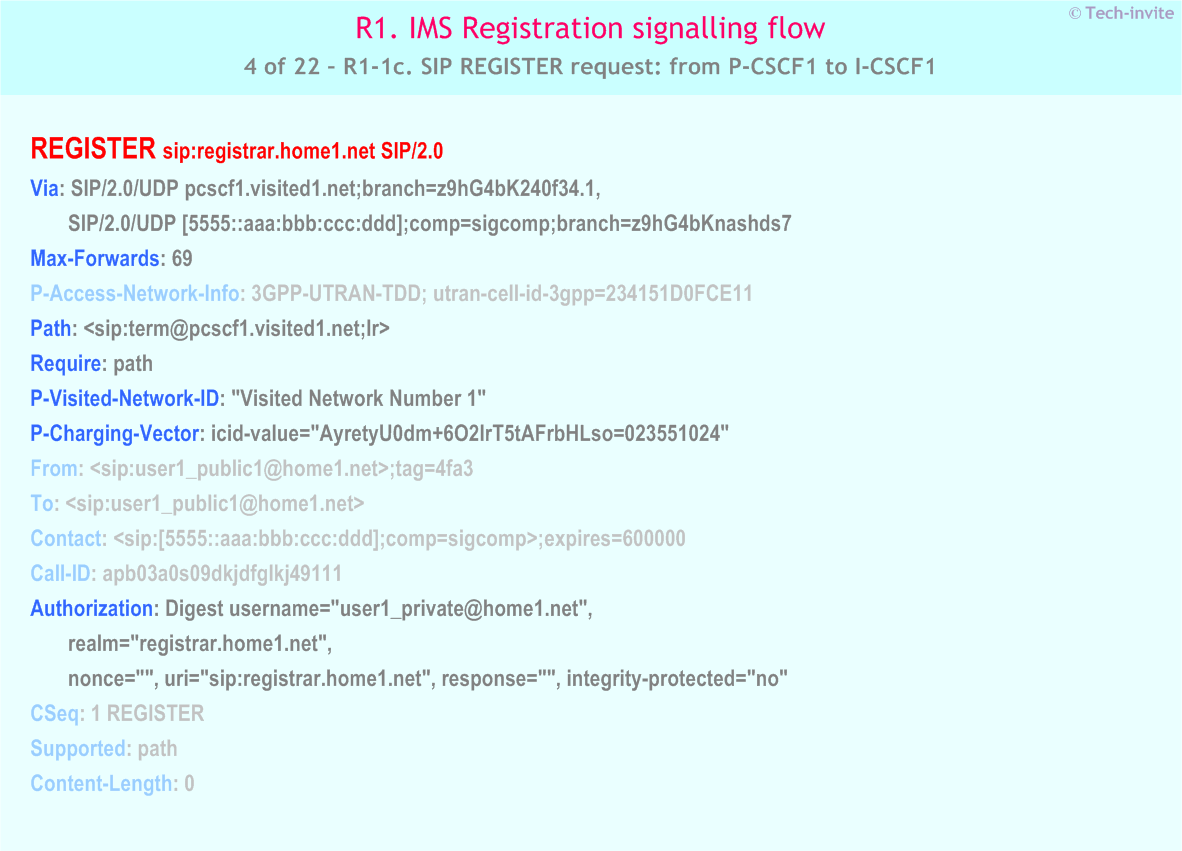back to TS 24.228

- P-CSCF1 needs to be in the path for all mobile terminated requests for this user. To ensure this, P-CSCF1 adds itself to the Path header value for future requests.
- P-CSCF1 adds the P-Visited-Network-ID header with the contents of the identifier of P-CSCF1 network. This may be the visited network domain name or any other identifier that identifies the visited network at the home network.
- P-CSCF1 removes the Security-Client header and associated "sec-agree" option-tags prior to forwarding the request. As the Proxy-Require header is empty, it removes this header completely.
- Path: This is the address of P-CSCF1 and is included to inform S-CSCF1 where to route terminating requests.
- Require: This header is included to ensure that the recipient correctly handles the Path header. If the recipient does not support the path header, a response will be received with a status code of 420 and an Unsupported header indicating "path". Such a response indicates a misconfiguration of the routing tables and the request has been routed outside the IM CN subsystem.
- P-Visited-Network-ID: It contains the identifier of P-CSCF1 network at the home network.
- P-Charging-Vector: P-CSCF1 inserts this header and populates the icid parameters with a globally unique value.